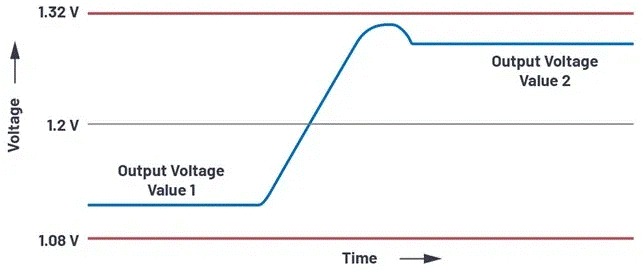Voltage regulators are generally used to generate a constant output voltage. By using the control loop, a stable and precise output voltage can be generated through an unregulated input voltage. What is the function of Dynamic Voltage Scaling (DVS)?
Dynamic voltage regulation means that the output voltage of the power supply can be adjusted during operation. There are various reasons for making such adjustments.
Under light-load operation conditions, improve the conversion efficiency of the PFC-level
The power factor correction (PFC) stage used for power compensation can increase the AC voltage of the grid voltage to the DC intermediate circuit voltage. In a 240 V AC system, the voltage of this intermediate circuit is generally 380 V, as shown in Figure 1. The ADP1047 PFC controller can use DVS to independently reduce the output voltage load without affecting the set 380 V voltage, for example, to 360 V. During the period of partial load operation, this measure can improve the conversion efficiency of the power supply。

Another DVS usage example is shown in Figure 2. In this example, the ADP2147 step-down switching regulator powers the digital signal processor (DSP). In many applications, microcontrollers, DSPS or FPgas can be used to improve system efficiency by reducing the core voltage when the processor is in standby mode. When the VDD_INT voltage (core voltage) decreases (for example, from 1.2V to 1.0V when the DSP operates under a low load state), various DSPS, including the ADSP-BF527 provided by ADI, can operate more efficiently. The power consumption of a processor is largely proportional to its clock frequency and the square of its operating voltage. Reducing the power supply voltage of ADSP-BF527 by 25% will reduce the dynamic power consumption by more than 40%. Many DSPS of ADI have similar characteristics.


Figure 3. Dynamic adjustment of power supply voltage based on load current.
免责声明: 本文章转自其它平台,并不代表本站观点及立场。若有侵权或异议,请联系我们删除。谢谢! Disclaimer: This article is reproduced from other platforms and does not represent the views or positions of this website. If there is any infringement or objection, please contact us to delete it. thank you! |


